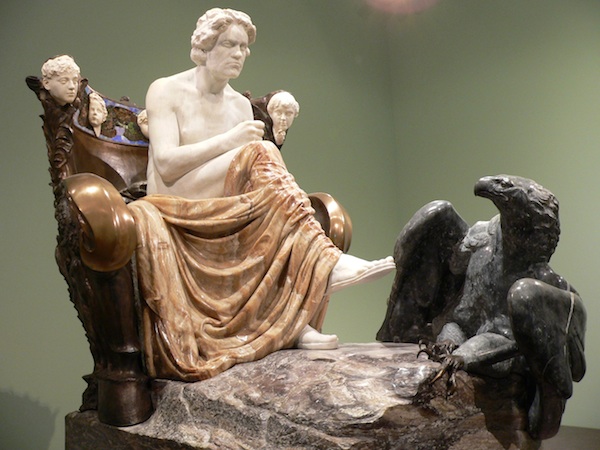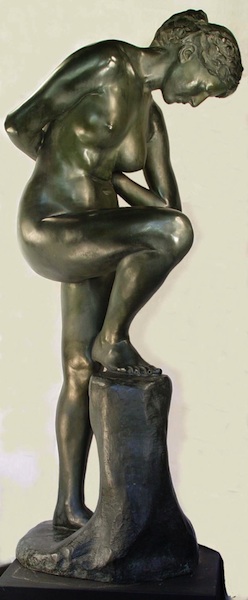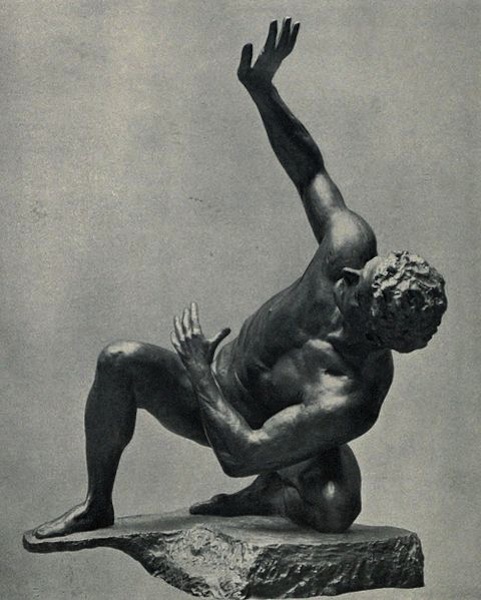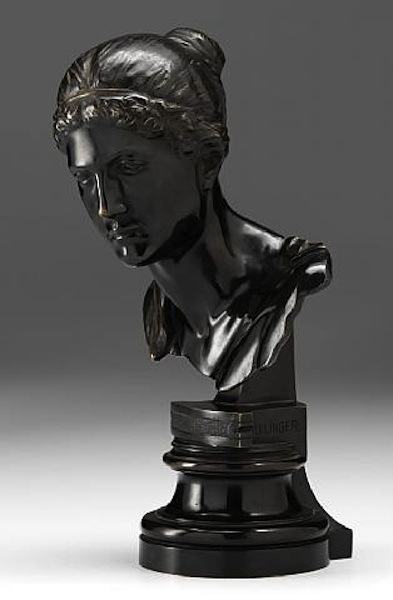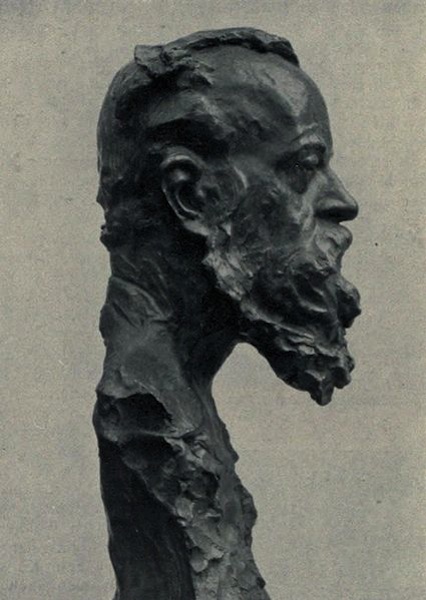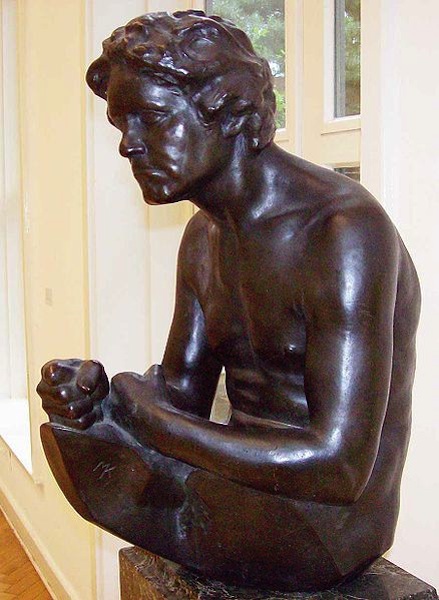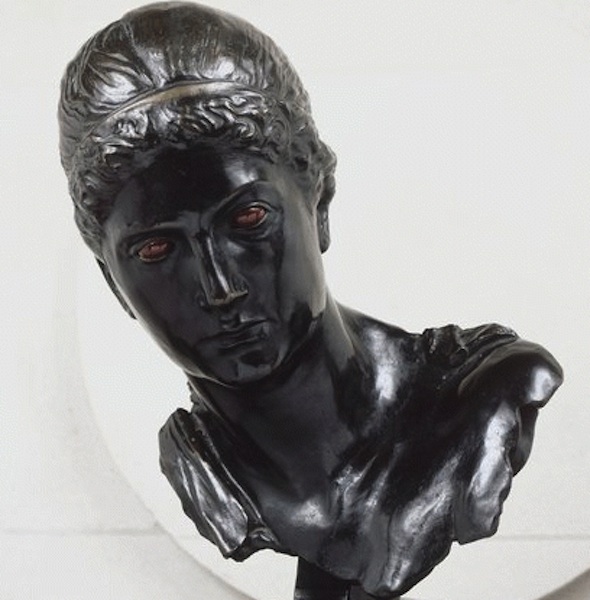
Max Klinger
1857- 1920 German Sculptor
Max Klinger 1857- 1920 was a German Symbolist painter, sculptor and printmaker.
Klinger was born in Leipzig and studied in Karlsruhe. An admirer of the etchings of Menzel and Goya, he shortly became a skilled
and imaginative engraver in his own right.
His best known work is a series of ten etchings entitled Paraphrases about the Finding of a Glove (printed 1881). These pictures were
based on images which came to Klinger in dreams after finding a glove at an ice-skating rink. In the leitmotivic device of a glovebelonging
to a woman whose face we never see Klinger anticipated the research of Freud and Kraft Ebbing on fetish objects. In this case, the glove becomes
a symbol for the artist's romantic yearnings, finding itself, in each plate, in different dramatic situations, and performing the role that we might
expect the figure of the beloved herself to fulfil. Semioticians have also seen in the symbol of the glove an example of a sliding signifier, or
signifier without signifiedin this case, the identity of the woman which Klinger is careful to conceal. The plates suggest various psychological
states or existential crises faced by the artist protagonist (who bears a striking resemblance to the young Klinger).
Klinger traveled extensively around the art centres of Europe for years before returning to Leipzig in 1893. From 1897 he mostly concentrated
on sculpture; his marble statue of Beethoven was an integral part of the Vienna Secession exhibit of 1902.
Contact Points
 wikipedia
|
|



